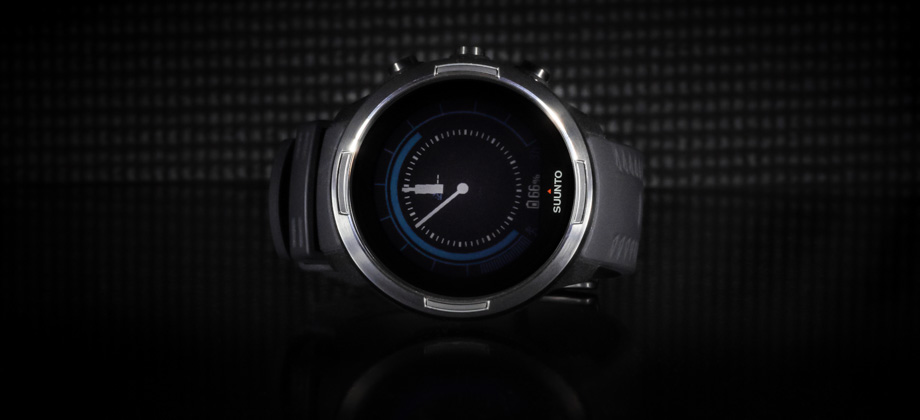Review: Suunto 9 Baro
Battery Life
Normally, the battery life for GPS devices is extended by either increasing the amount of time that goes by between each GPS sampling point, or 'fix', or by simply reducing the power of the GPS signal. The Suunto Spartan Ultra has three different GPS modes: 'Best' takes a GPS fix at full power every second which gives it an estimated battery life of 18 hours; 'Good' takes a GPS fix at low power every second which gives it an estimated battery life of 35 hours; and 'OK' takes a GPS fix at full power every 60 seconds which gives it an estimated battery life of 140 hours.
The Suunto 9 Baro on the other hand, also retains these three different GPS modes, but with slight changes: 'Best' retains its GPS fix of every second which gives it an estimated battery life of 25 hours; 'Good' now instead takes a GPS fix every 60 seconds which gives it an estimated battery life of 50 hours; and 'OK' doubles that by taking a GPS fix every 120 seconds which gives it an estimated battery life of 120 hours.
The watch then goes a step further and introduces new power modes that don't just stop at changes of the GPS sampling rates. The 'Performance' mode for instance uses 'best' GPS accuracy and keeps everything else enabled except for the touchscreen. The heart rate, either via the optical sensor or via the Suunto Smart Sensor chest strap, is also enabled, as are all the notifications and vibration alerts. The 'Endurance' mode reduces the GPS accuracy to 'good' and the display brightness to 20%. The 'Ultra' mode on the other hand, uses 'OK' GPS accuracy and turns off everything that is non-critical such as the notifications and vibration alerts, reduces the display brightness to 10%, enables the display timeout after 10 seconds, and turns off the oHR sensor (although it still picks up the Suunto Smart Sensor chest strap if used). All this helps to extend the battery life to 120 hours.

Just before you begin an activity, or 'move', an estimate of the battery life that remains is displayed on the watch face. This estimate is based on both the current charge as well as the power mode that has been selected. Simply pressing the upper right button then allows you to quickly toggle between the power modes and to select the one that best fits both the duration of the activity and the accuracy of the GPS tracking that you might require. The Suunto 9 Baro also displays low battery warnings when the battery drops to critical levels, and allows you to dynamically switch to different power modes even whilst in the middle of an activity.

FusedTrack
When the amount of time that goes by between each GPS sampling point is extended, the accuracy of the GPS tracking will undoubtedly be compromised, and ends up turning nice windy trails into jagged zig-zags. This is where the magic of the Suunto 9 Baro comes in, with the introduction of something that Suunto calls 'FusedTrack':
The 'Fused' concept has been around for quite a while: 'FusedSpeed' corrects the speed and the pace by taking into account data from both GPS and accelerometer readings, whilst 'FusedAlti' corrects altitude measurements by combining GPS and barometric data, and is a process that is done automatically on the Suunto 9 Baro based on the movements that are tracked on the accelerometer.
'FusedTrack' on the other hand, combines data from the gyro sensor, the accelerometer, and the compass, in order to generate a track even without GPS data. This is what fills in the 'gaps' in-between GPS fixes for the 'endurance' and 'ultra' power modes--gaps that would otherwise just be straight lines. The algorithm for FusedTrack also takes into account the number of watch oscillations, which is why it is enabled for running and trail running.
In the image below, the green line was taken with a GPS sample rate of 1 second, which is as accurate as one can get; the blue line however was taken with a GPS sample rate of 60 seconds without FusedTrack enabled--notice how it begins to deviate from the green line. Hover your cursor over the image to see how well the red FusedTrack line performed on a GPS sample rate of 120 seconds, which is a rate that is double that of the blue line:

The second image shows a section where a backtrack was required. The closer the two lines of the same colour are to one another, the more consistent the GPS measurements are. The closer the other lines are to the green line, the more accurate the measurements are. Once again, the green line was taken with a GPS sample rate of 1 second, and the blue line was taken with a GPS sample rate of 60 seconds without FusedTrack enabled. Hover your cursor over the image to see how well the red FusedTrack line performed on a GPS sample rate of 120 seconds:






